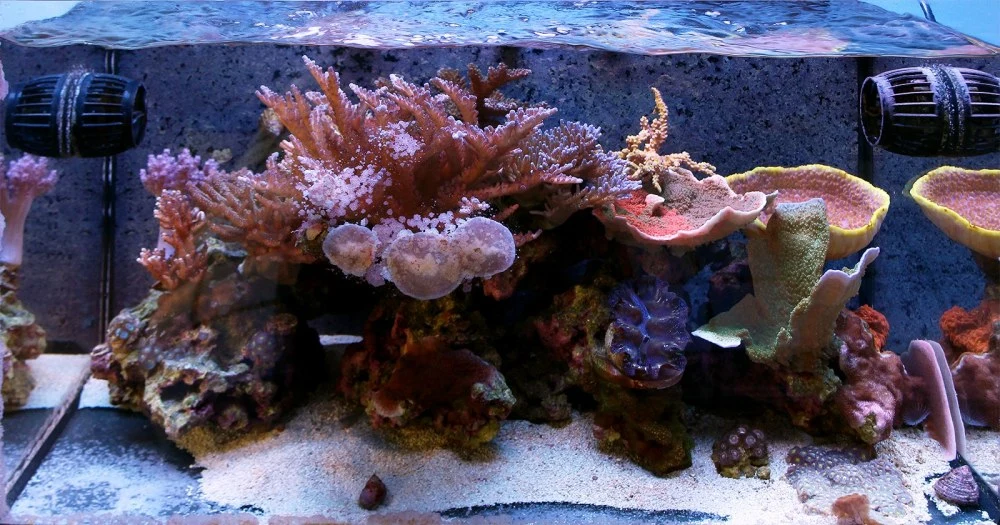Stunning 20-Gallon Reef Tank – joshthebox's TOTM | NanoReef

Tank Specifications
Volume: 20 Gallons / 75 Liters
Dimensions (L × W × H):
24.0" ×
15.0" ×
13.0"
61.0cm ×
38.0cm ×
33.0cm
Equipment List
- Salt: Red Sea
Frequently Asked Questions
What lighting setup is recommended for SPS corals?
For SPS corals, a T5 high-output fixture is recommended, as it provides even light distribution and a suitable spectrum for growth. In this specific setup, the ATI Dimmable Sunpower T5 with a bulb combo of ATI Blue + and ATI Coral + was used. It's essential to run a 12-hour photoperiod with 8 hours of full-spectrum lighting and 2 hours at either end with blue lights.
How do I maintain optimal water parameters in my reef tank?
Maintaining optimal water parameters involves regular testing and adjustments. It's crucial to test Alkalinity, Calcium, and salinity daily. Salifert test kits and a Hanna salinity pen are recommended for accurate readings. Dosing adjustments may be necessary based on test results, and water changes every two weeks help replenish trace elements and nutrients.
What type of filtration is advised for a nano reef tank?
A simple filtration setup is effective for a nano reef tank. It is suggested to use biological filtration media, like Marine Pure spheres and InTank media baskets. No mechanical filtration is required apart from a protein skimmer. This setup keeps the water clean while supporting beneficial bacteria.
How often should I feed my reef tank inhabitants?
Feeding should be done multiple times a day to ensure that both fish and corals receive adequate nutrition. In this tank, New Life Spectrum marine pellets are fed five times a day.
What are effective dosing methods for maintaining coral health?
Dosing with ESV B-ionic two-part system is an effective method to maintain optimal calcium and alkalinity levels. The owner doses 34ml of each part daily. Additionally, supplementing with products like Fuel or Acropower can enhance coral health, though these should be dosed sparingly.
What is the best cleaning routine for a reef tank?
Daily maintenance involves cleaning the glass with a magnetic cleaner and manually dosing live phytoplankton. Additionally, it is important to clean the skimmer components weekly, with a deeper clean of powerheads and the return pump every month. Regular water changes every two weeks help maintain water quality.
How should I conduct water changes in my reef tank?
Water changes should be done every two weeks, typically 3 to 4 gallons at a time. Prior to the change, mix 0 TDS RO/DI water with salt in a 5-gallon bucket until the desired salinity of 1.026 SG is reached and the solution is clear. Siphon the sand and back chambers to remove detritus.
What should I do if I encounter pest issues in my reef tank?
In case of pest issues such as black bugs, it is critical to dip new corals before introducing them to the tank. If pests do appear, treatments like Interceptor can help eliminate them. It’s also important to maintain a healthy copepod population, as these help control pests.
How can I prevent the overgrowth of invasive corals?
To manage invasive corals, such as encrusting Montipora, it’s essential to regularly frag corals to prevent shading and growth issues. Additionally, adequate space between corals during aquascaping can help control their growth.